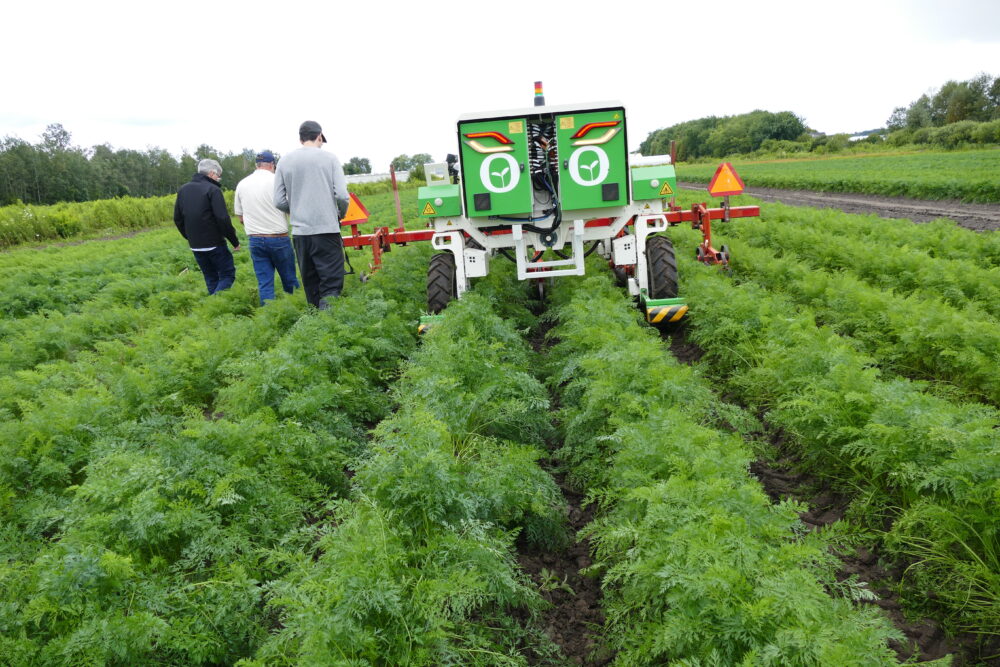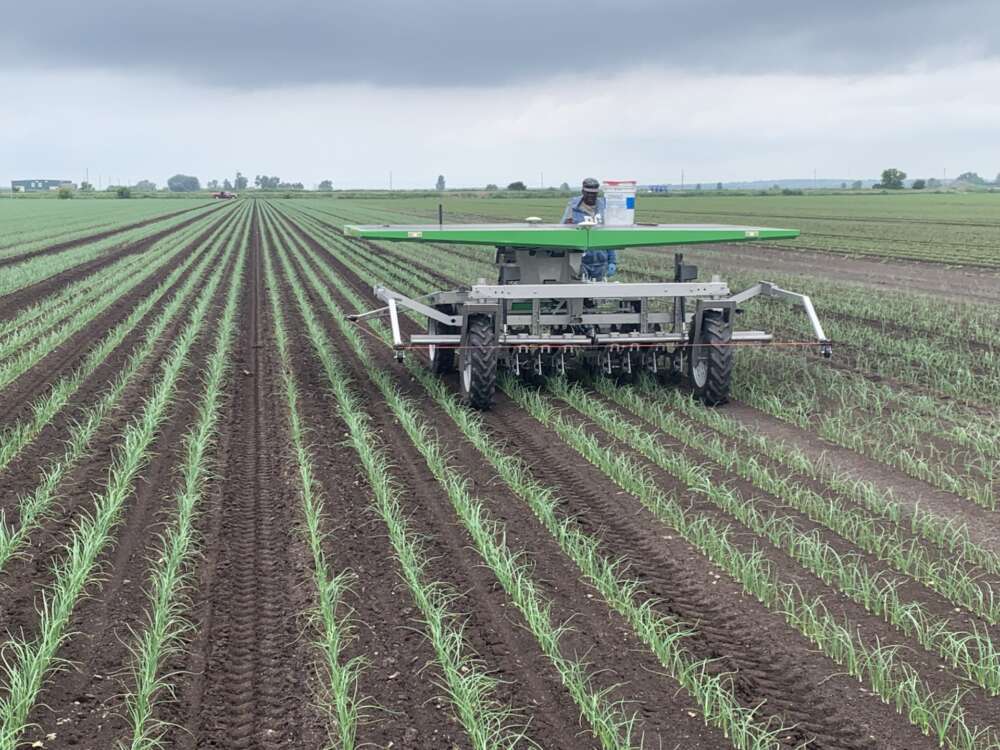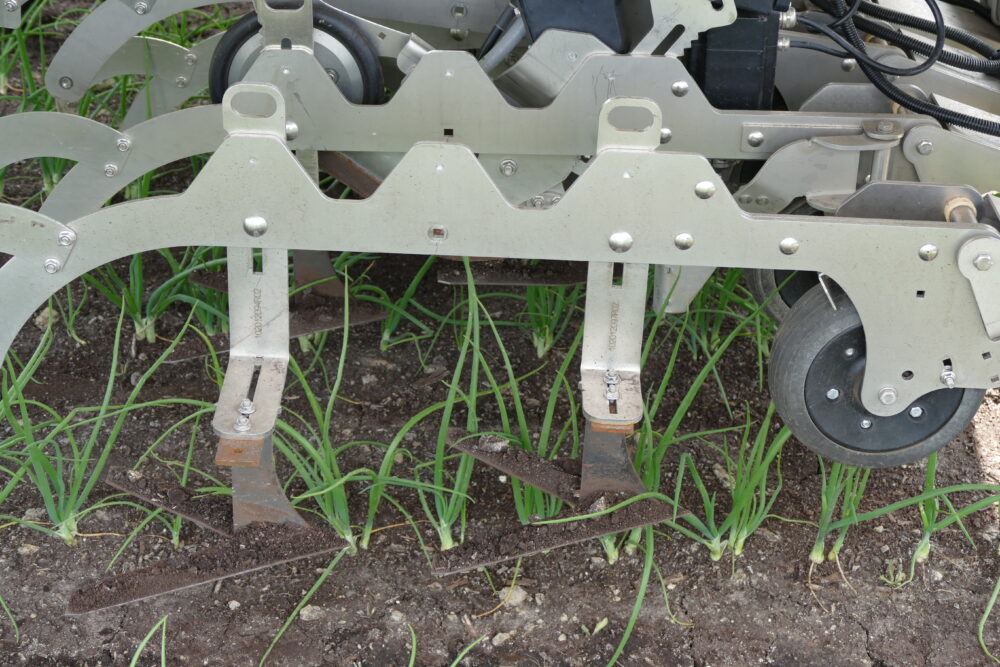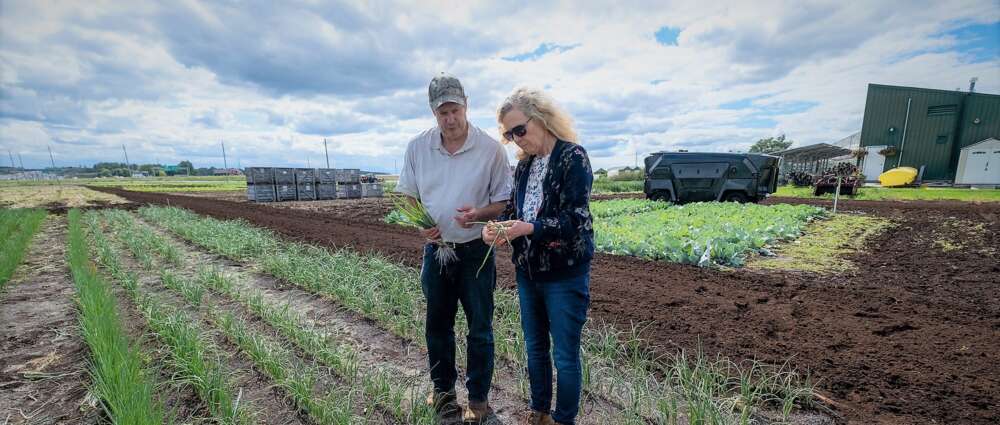The future of farming is near, as robots work alongside tractors in a University of Guelph study underway.
On the rich soils of the Holland Marsh north of Toronto, two robots drive down a local grower’s field to seed, weed and cultivate. Using precise geolocating, the robots know when they’ve reached the end of the field and when to turn around and start again. They even remember where they’ve planted their seeds in order to cultivate around them.
Are these self-driving robots, named Farm Droid and Orio, the future of Canadian agriculture?
U of G researchers will soon find out. New funding from the Ontario Agri-Food Innovation Alliance, a collaboration between the Government of Ontario and the University of Guelph, supports the first study to compare these cutting-edge robots to conventional methods.
Dr. Mary Ruth McDonald, professor in the Department of Plant Agriculture within the Ontario Agricultural College, is leading this three-year project, which began in 2023, at the Ontario Crops Research Centre and farms in Bradford, Ont.
“The robot addresses real issues that growers are dealing with right now,” says McDonald. “Not only are we providing feedback to the manufacturers, our technicians have been extremely innovative in improving the designs. We’re excited about the potential of these agricultural robots to transform the future of farming practices in Ontario and beyond.”
U of G researchers assess strengths, economic benefits of farm robots
Developed by robotics companies FarmDroid and Naïo Technologies, the two robots, which cost around $130,000 to $200,000, can be used for a number of crops: onions, beets, carrots and more.
Farm Droid, an autonomous seeder and weeder, has clear advantages for growers, McDonald says. Though it’s slower than a traditional tractor, it can work 24 hours a day. A “solar panel on wheels,” as McDonald describes it, the robot has a better environmental footprint and can be monitored at a distance through an app, freeing up workers for other tasks.
Part of McDonald’s project has involved optimizing the Farm Droid’s seeder. Their innovative design has already doubled the robot’s seeding speed from 250 metres an hour to at least 550, and the team has also seen bigger onions as a result, which can be worth a lot more for the grower.
The other robot, Orio, is an electric tool carrier for weeding, cultivating and seeding, producing less greenhouse gases than tractors. Lighter than most equipment, it has a lower risk of damaging the soil. The innovative design of McDonald’s group, with a broadcast and hooded sprayer specific for the Orio, is already in use in South Africa.


Orio (left) and Farm Droid (right) at the Ontario Crops Research Centre and farms in Bradford, Ont.

“People want their robots to multitask,” McDonald says. As such, she is also evaluating a new technology developed by Picketa Solutions for real-time nutrient analysis. The robots might one day be capable of grabbing a leaf with a mechanical hand and identifying its nutrient status in a second – a process that typically takes days. That capability will tell the growers what part of the field is deficient in a nutrient and where they should focus.
There are still some challenges. The solar-powered Farm Droid sometimes starts and stops in the rain. Orio, meanwhile, needs to have a charging station nearby, a difficult logistic depending on the farm.
But McDonald and her team are sharpening these robots’ reliability. Despite these challenges, she says the grower who has volunteered his field to be part of the study is already interested in purchasing the Farm Droid. He has been an advocate during the recent AgRobotics Demo Day, a promotional event to showcase this technology to local farmers.
“That kind of grower cooperation and community participation is extremely valuable to a project like this,” McDonald says.
Innovative robots tackle agricultural labour shortages
The Canadian Agriculture Human Resource Council predicts that one-third of the agricultural workforce will retire by 2030. This means 100,000 jobs will need to be filled. As McDonald notes, the cost of labour and the difficulty in fulfilling roles from temporary workers are large challenges that automation can help address.

Weeds are also becoming increasingly herbicide-resistant, McDonald says. Some crops don’t even have approved herbicides. Orio can be equipped with a mechanical weeder that is herbicide-free.
McDonald stresses that these robots will not replace human workers.
“Having additional technology takes stress from the tractor operators,” she says. “We anticipate that these robots are going to be an integral part of the operation. That allows you to use your human resources in a different way.”
McDonald adds her team of students hired to work on the farm and her research technicians have had valuable experiential learning opportunities through this project.
“Getting academia and industry to collaborate in innovative ways, right on the cutting-edge, has been one of many positive things about this study,” she says.
Dr. McDonald’s project is funded by the Ontario Agri-Food Innovation Alliance, a collaboration between the Ontario Ministry of Agriculture, Food and Agribusiness and the University of Guelph. Also contributing to the project are Haggerty AgRobotics, Picketa Systems and the AgRobotics Working Group. The Ontario Crops Research Centre is owned by Agricultural Research and Innovation Ontario and managed by U of G through the Alliance.
